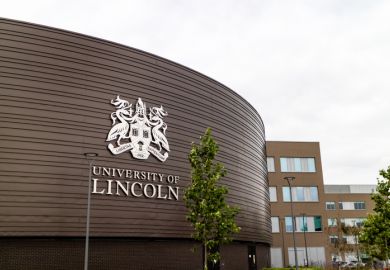With student number controls also due to be scrapped in England next year, Paul Wellings, vice-chancellor of the University of Wollongong, said the Australian experience of this policy had been decidedly mixed.
He said that other negative consequences included higher workloads for academics and a more casualised workforce.
Since Australia abolished student number controls at the start of 2012, many more students from poorer backgrounds had entered university, said Professor Wellings as he gave the Higher Education Policy Institute’s annual lecture in London on 26 November.
“Almost all universities have increased the numbers matriculating into their courses,” said Professor Wellings, who took charge at Wollongong in 2012 after almost 10 years as vice-chancellor of Lancaster University.
But while the extra student numbers had created academic job opportunities, many of these positions were teaching-only posts with a low level of job security, he added in the speech, titled “The architecture and the plumbing: what features do the higher education systems in the UK and Australia have in common?”
“Given the volatility in changes to student recruitment, universities have sought to mitigate the risk of year to year changes in student numbers by further casualisation of the workforce,” said Professor Wellings.
“The changes to staffing profiles and the workloads associated with increasing student loads has been a matter of concern in the current round of bargaining for unions and institutions,” he added.
Many of the extra students entering higher education also have lower high school scores than previous cohorts, raising concerns about whether they are able to cope with the demands of university study, Professor Wellings said.
Deregulation had also forced universities to invest more money in marketing to ensure they recruit sufficient numbers of students, he continued.
“Universities are now enhancing their investments in marketing and are appointing more staff with specific marketing skills in the education sector,” he said.
He also quoted a report by the National Commission of Audit, which said uncapping places had led to additional costs of $6.5 billion (£3.5 billion) between 2012 and 2017.
In May 2014, the Australian government outlined plans to cut funding to universities by about 20 per cent and allow universities to charge unlimited fees to student to make up any shortfall.
“Australia and the UK stand out as two OECD [Organisation for Economic Cooperation and Development] countries attempting to free their higher education systems from direct dependence on taxpayer funding and micro-control by central government,” said Professor Wellings.
“Student number controls have been liberated (in 2012 for Australia and 2014 for the UK) and there is willingness to explore the merits of moving towards further deregulation of fees for domestic undergraduates.”
Register to continue
Why register?
- Registration is free and only takes a moment
- Once registered, you can read 3 articles a month
- Sign up for our newsletter
Subscribe
Or subscribe for unlimited access to:
- Unlimited access to news, views, insights & reviews
- Digital editions
- Digital access to THE’s university and college rankings analysis
Already registered or a current subscriber? Login




